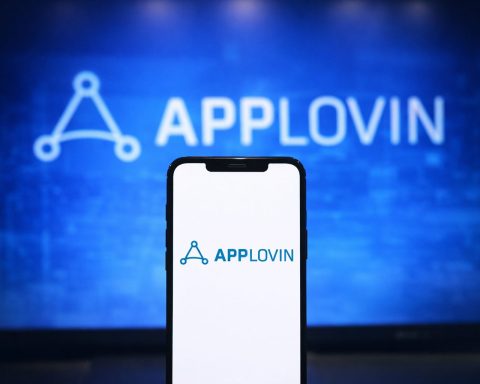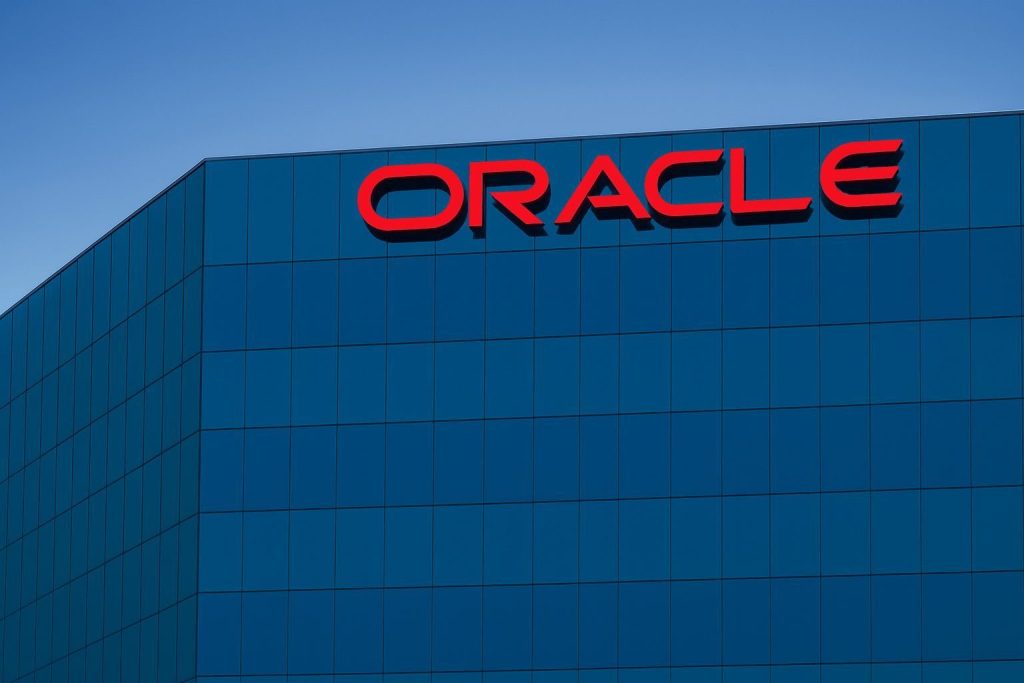AI contracts, record growth, sky‑high valuation and heavy insider selling are all colliding just as traders gear up for Friday’s session.
1. Where Palantir stock stands going into Friday
As of the latest regular U.S. market close (Wednesday, November 26, 2025), Palantir Technologies Inc. (NASDAQ: PLTR) finished around $165.77, up about 1.4% on the day. That gives the company a market capitalization in the neighborhood of $395 billion, a trailing P/E ratio near 395, and a 52‑week range of roughly $63.40 to $207.52. [1]
In other words:
- The stock has more than doubled in 2025 and is up well over 200% over the past year, depending on the exact start date you use. [2]
- It now trades about 20% below its early‑November record high near $207.50, after a sharp post‑earnings sell‑off. [3]
Palantir is still one of the market’s highest‑beta AI names, so even modest shifts in sentiment can move the stock aggressively at the open.
2. Explosive Q3 2025 earnings and guidance
Palantir’s current setup is anchored in a blowout Q3 2025 report released on November 3:
- Revenue: About $1.18 billion, up ~63% year over year and roughly 18% sequentially, beating Wall Street estimates of around $1.09 billion. [4]
- Adjusted EPS:$0.21 vs consensus $0.17, continuing a multi‑quarter beat‑and‑raise pattern. [5]
- GAAP profitability: Palantir is now consistently GAAP profitable, with Q3 GAAP EPS of $0.18 and a GAAP operating margin around 33%. [6]
- Rule of 40: Management highlighted a Rule‑of‑40 score above 110%, combining rapid growth with very high margins — a rare combination in software. [7]
On guidance, the company went even more aggressive:
- Q4 2025 revenue outlook:$1.327–$1.331 billion, implying roughly 61% year‑over‑year growth, well ahead of prior analyst expectations around $1.19 billion. [8]
- Full‑year 2025 revenue: Raised for the third time this year to $4.396–$4.40 billion, up from previous guidance in the low‑$4.1 billion range. [9]
- Adjusted operating income: Management is targeting roughly $2.15+ billion for 2025, with free cash flow guidance approaching $1.9–$2.1 billion. [10]
Under the hood, Q3 showed just how fast the business is compounding:
- Total revenue: From about $726 million to $1.18 billion year‑on‑year.
- U.S. revenue: Up ~77% year‑over‑year to roughly $883 million, now ~75% of total sales. [11]
- Commercial revenue: Up ~73% overall; U.S. commercial revenue alone jumped 121% year‑over‑year and nearly 30% quarter‑over‑quarter, reflecting Palantir’s AIP “boot camp” go‑to‑market model. [12]
- Backlog / bookings: Q3 contract value bookings reportedly hit around $2.8 billion, up more than 150% year‑on‑year, with over 200 contracts of $1 million+ signed and customer count rising to roughly 900+. [13]
Fundamentally, the numbers look like a classic “hyper‑growth software” story — but at scale. That’s key context for Friday’s open: earnings momentum is not the issue; valuation is.
3. Big AI contracts: $10 billion Army deal, $385 million VA platform and more
Palantir’s 2025 story has been dominated by a string of headline government wins:
U.S. Army: 10‑year, up‑to‑$10 billion enterprise agreement
In July/August, the U.S. Army announced a 10‑year Enterprise Agreement (EA) with Palantir with a ceiling of up to $10 billion. The deal consolidates roughly 75 separate contracts into a single framework, simplifying procurement of Palantir’s data integration and AI tools across the Army and other parts of the Department of Defense. [14]
Important nuance for tomorrow’s traders:
- That $10 billion is a maximum, not guaranteed revenue. So far, only about $10 million has actually been obligated, according to contract data highlighted by independent analysis. [15]
- It dramatically strengthens Palantir’s strategic position in U.S. defense, but much of the revenue and cash flow is likely to show up from FY 2026 onward, not immediately in Q4. [16]
Veterans Affairs: $385 million NCVAS data platform (under protest)
The Department of Veterans Affairs awarded Palantir a five‑year, $385.4 million contract to build the National Center for Veterans Analysis and Statistics (NCVAS) platform, effectively replacing a previous Foundry‑based system with a more integrated decision‑support platform. [17]
However:
- A rival, Carahsoft, filed a bid protest with the Government Accountability Office shortly after the award. [18]
- That means some revenue timing could be delayed or reshaped depending on the protest’s outcome.
For Friday’s session, the VA deal sits in the “potentially significant, but not yet fully visible in numbers” bucket.
4. Partnerships that broaden the runway beyond defense
Alongside government work, Palantir has spent 2025 deepening its commercial ecosystem — another key driver investors will be weighing before the bell:
- NVIDIA alliance: Palantir is integrating NVIDIA’s accelerated computing stack, CUDA‑X libraries and Nemotron/NeMo models into its Ontology and AIP platform. NVIDIA frames the partnership as a way to build an “operational AI” stack that turns enterprise data into decision intelligence, with Lowe’s as a flagship user in supply‑chain optimization. [19]
- PwC UK: PwC UK and Palantir expanded their strategic alliance into a multi‑year, multi‑million‑pound commitment, positioning Palantir as a preferred AI partner for large U.K. enterprises and public‑sector clients. [20]
- NHS apprenticeship program: Palantir and Multiverse launched apprenticeship programmes tied to the NHS Federated Data Platform, aimed at building in‑house data and AI talent across the U.K. health system. [21]
- Marketing/advertising: A partnering deal with Stagwell aims to combine Palantir Foundry with Stagwell’s marketing tech stack, creating an AI‑driven platform that acts as a central marketing data hub and “agentic” campaign engine for large brands. [22]
- Aviation & industrial: A strategic partnership with FTAI Aviation (details are partially behind access walls) focuses on using Palantir’s software to optimize aircraft engine maintenance, repair and exchange — a template for broader asset‑intensive industries. [23]
Taken together, these alliances reinforce the bull case that Palantir is not just a defense contractor, but a horizontal AI operating system for everything from logistics and retail to advertising and healthcare — a big part of why many commentators say it’s “orchestrating” the AI boom rather than simply riding it. [24]
5. Valuation, AI bubble fears and the “Burry effect”
The reason PLTR is so controversial going into Friday’s open is simple: valuation.
Depending on the data source and whether you look at trailing or forward earnings:
- Palantir trades at roughly 250x–400x forward earnings and an extremely high price‑to‑sales multiple, far above AI leaders like Nvidia or mega‑caps in the S&P 500. [25]
- Some coverage pegs certain valuation metrics (like P/E on narrow GAAP measures) at four‑digit levels, underlining how stretched the stock looks versus broader market norms. [26]
That backdrop has attracted high‑profile skeptics:
- Michael Burry (“The Big Short”) disclosed large put positions against both Palantir and Nvidia, arguing in public posts and a detailed Substack that parts of the AI trade are in a bubble and that investors may be underestimating the risk of rapid hardware obsolescence and aggressive depreciation accounting. [27]
- Following Q3, Reuters highlighted that Palantir’s shares fell about 6–8% despite beating estimates and raising guidance, as investors fixated on lofty multiples and Burry’s short bets. [28]
- Commentators at Barchart and other outlets compare current sentiment to late‑cycle dot‑com exuberance, noting circular flows of AI money and extreme expectations baked into Palantir’s price. [29]
At the same time, AI optimists argue the “bubble” narrative is too simplistic. Some macro investors, like Bridgewater’s Greg Jensen, have suggested the real AI speculation phase may still be ahead — implying that today’s valuations could actually be the front of a much bigger cycle rather than its peak. [30]
For Friday’s open, the practical takeaway is that Palantir is extremely sensitive to any headline that reinforces or challenges the AI bubble story — especially anything involving big funds, regulators or macro commentary.
6. Wall Street’s split verdict: lots of “Hold,” modest upside targets
Analyst sentiment going into November 28 is best described as “respectful but cautious.”
Different platforms track slightly different analyst sets, but the pattern is consistent:
- MarketBeat data shows a consensus rating of “Hold,” with roughly 5 Buy, 17 Hold and 2 Sell ratings and an average price target around $172–$173 — only a few percent above the latest close. [31]
- TipRanks reports a similar Hold consensus, with an AI‑driven analyst recently downgrading Palantir from Buy to Hold and cutting the price target from $232 to $188 — about 13–14% upside from current levels. [32]
- Barchart’s synthesis of 21 analysts also lands on a Hold‑leaning mix, with a wide range of targets but an average in the high‑$180s to low‑$190s, again implying relatively modest upside given the volatility. [33]
The core analyst debate looks like this:
Bullish side:
- Off‑the‑charts growth in U.S. commercial and total revenue.
- Rule‑of‑40 above 100%, with software‑like margins and large free‑cash‑flow generation. [34]
- Strategic position at the “software layer” of AI infrastructure, reinforced by partnerships like NVIDIA, PwC and big defense EAs. [35]
Cautious/bearish side:
- Multiples that are extreme even by AI standards, leaving little room for execution missteps. [36]
- Slower international growth compared to the U.S. and heavy reliance on government contracts. [37]
- Questions about how quickly large, headline contract wins actually convert into billable, cash‑flow‑producing work, as seen with the Army and VA deals. [38]
Going into the open, the consensus is not that Palantir is a bad business — far from it — but that the stock may already discount a great deal of future success.
7. Insider selling vs. institutional buying
Another tension point traders are watching closely is who is buying and who is selling at these levels.
Heavy insider selling
Filings and secondary reporting show meaningful selling by top executives:
- CEO Alex Karp and other senior leaders have collectively sold over $200 million in stock as the share price rallied, including one Karp sale of roughly 585,000 shares worth about $96 million. [39]
- MarketBeat tallies around 1.15 million shares sold by insiders over the last 90 days, valued near $187 million, with insiders still holding about 9.23% of shares outstanding. [40]
- Some of these sales are under pre‑arranged 10b5‑1 plans, but the scale and timing — overlapping with a sharp post‑earnings pullback — have nonetheless spooked parts of the market. [41]
Institutional flows still largely positive
On the other side of the ledger, big funds are still adding exposure:
- Quadrant Capital Group boosted its PLTR stake by 35% in Q2, to roughly 39,410 shares worth about $5.4 million. [42]
- Russell Investments Group increased its position by 3.1% to about 849,000 shares valued near $115 million. [43]
- GM Advisory Group raised its stake by 86%, and numerous smaller wealth managers have also been accumulating. [44]
Overall, roughly 45–46% of Palantir’s float is held by hedge funds and other institutions, according to recent filings. [45]
For Friday’s open, the question is whether the narrative around insider selling or the data on institutional accumulation drives short‑term sentiment.
8. Legal and reputation risks on the radar
Palantir has always operated close to the edge of sensitive domains — defense, intelligence, immigration, healthcare data — and 2025 has brought fresh legal and PR scrutiny:
- In late October, the company sued two former senior engineers, alleging they stole trade secrets to build a “copycat” AI firm called Percepta AI. The lawsuit focuses on alleged misuse of Palantir’s confidential AI platform code and appears designed to protect core IP and deter future defections. [46]
- Palantir has also challenged a Defense Intelligence Agency (DIA) sole‑source plan, arguing the government should use commercial software instead — echoing a successful Army legal fight from 2016 that helped jump‑start its federal growth. [47]
- The company has published detailed blog posts “correcting the record” in response to critical articles from outlets like The American Conservative and The New York Times, signalling management’s awareness that reputational risk is intertwined with its growth story. [48]
None of these issues appear to pose an immediate existential threat, but they add noise and headline risk for a stock whose valuation already assumes smooth execution.
9. What to watch before and just after the November 28 open
Here are the key factors likely to influence how PLTR trades around the Friday open:
- Overnight macro and AI sentiment
- Any fresh commentary on AI “bubble” risks, changes in interest‑rate expectations, or large rotations into/out of high‑multiple tech could amplify moves in Palantir.
- Articles and appearances discussing Michael Burry’s puts or AI infrastructure spending could be especially impactful, given recent sell‑offs after his disclosures. [49]
- Follow‑through from insider and fund flow headlines
- Interpretation of Q4 and FY 2025 guidance
- Contract monetization vs. headline value
- Watch commentary dissecting how much of the $10 billion Army EA and $385 million VA contract will actually be recognized as revenue over the next few quarters. Analysts and bloggers have already highlighted the gap between headline contract values and current funding obligations. [54]
- Technical levels and prior support
- Market technicians are watching whether support near $150–$155 holds, as recent analysis has framed that zone as a potential floor after the stock’s pullback from above $200. [55]
- Any decisive break below that range could invite more momentum‑driven selling; a bounce from that area would reinforce the “strong but volatile uptrend” narrative.
10. Bottom line: How Palantir looks heading into Friday
Going into the November 28, 2025 open, Palantir sits at the crossroads of several powerful but conflicting forces:
- Fundamentals: Q3 and guidance show exceptional growth, rising profitability, and strong cash generation, with particularly explosive U.S. commercial momentum.
- Strategic position: Massive Army and VA deals, plus alliances with NVIDIA, PwC, Stagwell, NHS partners and industrial players, reinforce its role as a core AI software layer across defense and enterprise. [56]
- Risks: An extreme valuation, heavy recent insider selling, trade‑secret litigation, and growing AI bubble chatter from high‑profile bears like Michael Burry create an unusually low margin of error. [57]
For traders and investors assessing PLTR before the bell on Friday, the key question isn’t whether Palantir is a real business — its contracts, partnerships and financials suggest it clearly is. The question is whether the current share price properly reflects both the opportunity and the risks.
If you’re evaluating the stock for your own portfolio, it’s crucial to consider:
- Your time horizon (days vs. years)
- Your tolerance for volatility and drawdowns
- How concentrated you want to be in high‑multiple AI names
This article is for information and news purposes only and is not a recommendation to buy, sell or hold any security. Consider speaking with a qualified financial adviser and doing your own research before making investment decisions.
References
1. www.marketbeat.com, 2. 247wallst.com, 3. www.barchart.com, 4. www.reuters.com, 5. www.reuters.com, 6. investors.palantir.com, 7. investors.palantir.com, 8. www.reuters.com, 9. www.reuters.com, 10. investors.palantir.com, 11. investors.palantir.com, 12. investors.palantir.com, 13. www.barchart.com, 14. www.army.mil, 15. www.govconwire.com, 16. www.fedsavvystrategies.com, 17. www.govconwire.com, 18. www.washingtontechnology.com, 19. nvidianews.nvidia.com, 20. www.businesswire.com, 21. investors.palantir.com, 22. www.prnewswire.com, 23. ir.ftaiaviation.com, 24. www.marketbeat.com, 25. www.reuters.com, 26. www.idnfinancials.com, 27. www.businessinsider.com, 28. www.reuters.com, 29. www.barchart.com, 30. www.businessinsider.com, 31. www.marketbeat.com, 32. www.tipranks.com, 33. www.barchart.com, 34. investors.palantir.com, 35. nvidianews.nvidia.com, 36. www.reuters.com, 37. www.tipranks.com, 38. www.benzinga.com, 39. www.idnfinancials.com, 40. www.marketbeat.com, 41. www.idnfinancials.com, 42. www.marketbeat.com, 43. www.marketbeat.com, 44. www.marketbeat.com, 45. www.marketbeat.com, 46. www.reuters.com, 47. www.washingtontechnology.com, 48. blog.palantir.com, 49. www.businessinsider.com, 50. www.idnfinancials.com, 51. www.marketbeat.com, 52. www.reuters.com, 53. www.reuters.com, 54. www.govconwire.com, 55. www.marketbeat.com, 56. www.barrons.com, 57. www.idnfinancials.com









